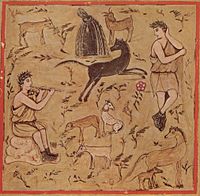
Photo from wikipedia
This paper uses a market segmentation approach to examine the effects of digital disruption in the book industry. A Bayesian efficient experimental design is employed in order to develop a… Click to show full abstract
This paper uses a market segmentation approach to examine the effects of digital disruption in the book industry. A Bayesian efficient experimental design is employed in order to develop a stated preference discrete choice experiment that incorporates an array of book formats and attributes. The experiment was conducted on a panel of Australian readers. The results were analysed using a latent class model, leading to the identification of three distinct classes of book readers. The largest class of readers is comprised of ‘technological adopters’ who demonstrate a similar willingness to read on both traditional printed book formats and newer digital ones. Members of this class rely on critical review scores to make purchasing decisions and are the youngest of the three classes. Second is a class of ‘popular readers.’ This group consists of price-sensitive readers who clearly favour reading popular fiction on traditional paper-based book formats only. The third group are ‘avid readers’ who exhibit the highest willingness to pay for books and show a desire to read books of all genres. The identification of discrete segments of readers, along with their associated price elasticities and willingness to pay figures, can assist book industry stakeholders (such as book publishers and sellers) with the development of effective strategies to guide them through the various stages of digital book formats technology adoption life cycle. Such results can also be used to help steer cultural policy makers during a period of rapid technological change and uncertainty.
Journal Title: Journal of Cultural Economics
Year Published: 2019
Link to full text (if available)
Share on Social Media: Sign Up to like & get
recommendations!